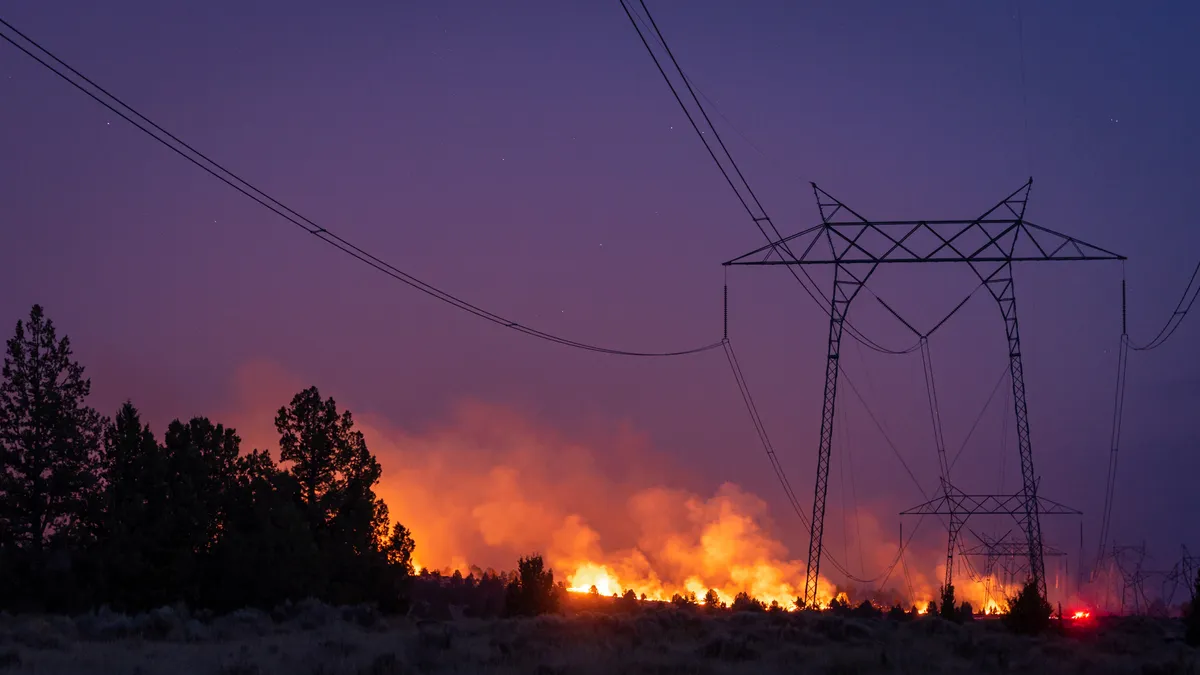To accommodate the storage needed to ensure grid reliability as renewable energy grows, the operator of California’s electricity system is working to improve how it models energy storage to facilitate market participation and increase payments to storage providers. The California Independent System Operator also is revising its model to ensure that large battery projects that are directed specifically to help protect grid frequency do so as instructed.
“There is a great fleet of storage resources that have made a meaningful impact on grid reliability,” Gabe Murtaugh, California Independent System’s storage manager, said during a July 7 workshop on model improvements. “We need to roll up our sleeves” and improve the existing model or introduce a new one, he told stakeholders.
CAISO’s existing model, known as the Non-Generator Resource, or NGR model, essentially is used to estimate large energy storage facilities’ ability to participate in the wholesale power market so they are in sync with the grid operator’s schedules and dispatch instructions.
"We’ve entered a golden age of energy storage here in California."

Elliot Mainzer
CEO, CAISO
The improvements aim to do that by better reflecting a project’s ability to discharge — send power to the grid at a given rate, or charge from the grid.
California has the largest amount of utility-scale batteries connected to the grid in the U.S., reaching 3,163 MW as of June 1, according to CAISO. And many more large battery storage systems are expected, with 700 MW projected to have been added last month, said CAISO CEO Elliot Mainzer.
“We’ve entered a golden age of energy storage here in California,” Mainzer added during a June 14 ribbon-cutting ceremony at the Pacific Gas & Electric-Tesla 182.5 MW battery storage facility, which can provide up to four hours of output, along the Central Coast in Moss Landing.
The model is ahead of the curve
A unique attribute of CAISO’s NGR model, first developed back in 2012, is its ability to move easily between batteries discharging, or feeding the grid, and fueling up from the grid, or charging, according to CAISO and storage advocates.
The ability to charge and discharge “is very important for energy storage,” said Alex Morris, California Energy Storage Alliance executive director.
Key issues with the existing modeling parameters entail the amount of compensation storage owners reap for both charging batteries during periods of excess generation and discharging to the grid when system demand is high.
Storage facilities make money on the price differences between times of charging energy when prices are low and discharging energy when prices are high because energy is scarce, said Susan Schneider, Phoenix Consulting principal.
CAISO is revamping its model to “better and more rationally dispatch energy storage resources and perhaps virtual power plants,” Morris said. “Despite griping, we are still very positive on the model because it is one of the best models in the world,” he added.
The proposed model revisions, reworked in response to stakeholder input, were released June 30. Key improvements may be incorporated into the NGR model, as well as into the new “Energy Storage Resource” or ESR model.
The ESR model, unlike the established NGR one, is more sophisticated because it reflects batteries’ dynamic state of charge, that is, the amount of charge and discharge and the rate at which it occurs. But it is still under development.
"There are millions of dollars at stake."

Alex Morris
Executive director, California Energy Storage Alliance
Another troubling issue for storage providers participating in the wholesale market has been their inability under the current NGR model to control how their projects that piggyback on large solar or other renewable generation are charged.
The economic viability of storage linked to a renewable energy facility is largely dependent on the federal Investment Tax Credit, or ITC. Reaping this large tax credit which is up to 30%, is contingent on the battery being charged from the associated renewable plant. Fueling it from the grid does not count as 100% renewable energy, and will lower or knock out the credit.
“There are potentially huge economic costs to co-located storage projects charging from the grid,” Schneider said.
“There are millions of dollars at stake,” Morris added.
The “battery system must be charged at least 75% of the time by the solar facility rather than from the grid, over the course of a year, in order to be eligible for the ITC,” according to the law firm Morgan Lewis.
For that reason, energy storage power purchase agreements often forbid batteries from charging from the grid. In addition, local property-tax benefits can also depend on use of 100% renewable energy to charge the storage unit.
To protect their ITC and contracts, some storage operators have threatened to disconnect from the grid to avoid unwanted charging that would jeopardize the tax credit and also their power contracts.
That led CAISO to recently change its proposed policies to provide operators “the tools to keep storage facilities from being involuntarily charged by the grid,” Schneider said. “This is a significant policy change by the CAISO,” she added. The grid operator previously viewed the ITC matter as a tax issue that had to be managed by storage operators.
The grid operator staff also is trying resolve why some storage providers don’t follow regulation instructions.
The grid operator tells a storage generator to supply power to the grid, known as “regulation up,” or to take supply off of it, “regulation down.” CAISO does this through dispatch signals on a four-second basis so a project quickly helps keep grid frequency from varying outside acceptable ranges because of unexpected changes in demand and generation.
“This is different from typical market instructions for energy, which arrive once every five minutes,” CAISO’s Spokesperson Anne Gonzales said.
Some of the storage units providing these ancillary services have not responded as directed by CAISO’s signals but why that is happening and whether the problem is with the storage modeling or the operator is not known and being investigated by the grid operator.
Therefore, stakeholders want CAISO to investigate the matter more fully before imposing what it thinks may be a fix.
Storage replacing local gas plants
In addition to protecting co-located storage’s federal tax credit and increasing storage units’ compliance with regulation dispatch instructions, CAISO is currently trying to resolve with storage owners and developers how to enable local energy storage to replace gas plants that provide local reliability, which is impacted by transmission constraints.
This pertains to utility-scale storage in large urban centers that is often charged by remote wind and solar resources transported by the transmission highway.
Central to the debate is whether there is enough transmission capability to import enough cheap solar to fuel the local storage units, which would replace the local gas plants.
CAISO plans to release its final versions of proposed NGR enhancements next month. CAISO’s board is expected to vote on them in October. The grid operator also will develop additional enhancements for its ESR model under development subsequently






















